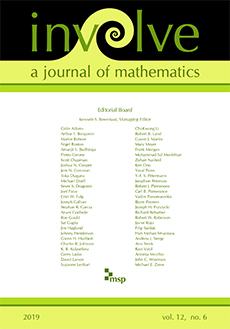Abstract
Evolutionary graph theory combines evolutionary games with population structure, induced by the graph. The games used are limited to pairwise games occurring on the edges of the graph. Multiplayer games can be important in biological modelling, however, and so recently a new framework for modelling games in structured populations allowing games with arbitrary numbers of players was introduced. In this paper we develop the model to investigate the effect of population structure on the level of aggression, as opposed to a well-mixed population for two specific types of graph, using a multiplayer hawk-dove game. We find that the graph structure can have a significant effect on the level of aggression, and that a key factor is the variability of the group sizes formed to play the games; the more variable the group size, the lower the level of aggression, in general.
Citation
Marie Bruni. Mark Broom. Jan Rychtář. "Analysing territorial models on graphs." Involve 7 (2) 129 - 149, 2014. https://doi.org/10.2140/involve.2014.7.129
Information





